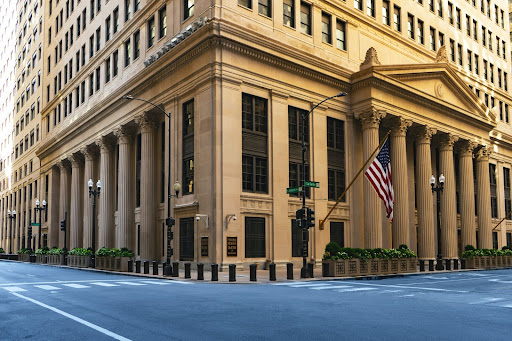Faith in the political system is at an all time low. Inflation is ravaging the US economy like it has not seen since the 1970s. Recent stock market and crypto gains have gone up in smoke. A thread connects all these events, and that is the Federal Reserve system. You might know the Federal Reserve from conspiracy theories and quick glances at the business section before heading to the sports section, but you probably don’t know what it actually is.
Understanding the Federal Reserve requires understanding the history of banking in America. A bank borrows money from short-term depositors and lends that money to long-term borrowers, taking advantage of the difference in interest rates. During the so-called free banking era of the early 1800s, banks were largely unregulated and relied on consumers believing their gold deposits were secure. However, only a fraction of the deposits were actually held in reserve. If the bank goes bankrupt, depositors could lose everything. If rumors, however false, spread that a bank is in trouble, it could lead to a run on the bank. With each depositor demanding their gold at the same time, the bank would be unable to function. In order to facilitate transactions, banks issued paper notes in exchange for gold deposits. Since these notes would be worthless if the bank failed, they would trade at less than face value. The so-called “wild banks” would issue more notes than they could ever redeem, robbing their depositors in the process. (It should be noted that a form of modern cryptocurrency called “stablecoins” is actually wild banking.)
In order to help pay for the Civil War, Congress eventually authorized the creation of paper currency, dubbed “greenbacks”, which would be accepted nationwide. They also replaced unregulated local banks with more reputable “national banks”, eliminating almost all other currencies in circulation. However, without a strong central authority to back them up, even these banks were prone to panics and panics. After financier JP Morgan personally bailed out several banks in 1907, demand grew for stronger government action. However, this demand has not overcome longstanding resistance to the creation of a single government-run central bank. In a top-secret meeting on Jekyll Island, America’s financial elite agreed on a proposal to create the Federal Reserve which was passed by Congress in 1913.
The system, which remains in place to this day, requires all major banks to hold stakes in their regional Federal Reserve Bank, of which there are twelve. While the regional banks are theoretically tied, the New York Fed is practically the most important. A politically appointed board of governors formally oversees the system, but the Federal Open Market Committee, which includes the seven members of the board of governors and the presidents of the regional banks, makes the most important decisions. Generally, the twelve regional presidents attend the meetings, but they receive only five votes in total, which they allot by rotation, with the exception of the president of the Federal Reserve Bank of New York, who has a permanent seat. By tradition, the Chairman of the Board of Governors, currently Jerome Powell, is elected President and the President of the Federal Reserve Bank of New York is Vice President.
The question of exactly what the Federal Reserve does is complicated because the financial system has changed so much since its inception. The overall objective of the system is to maintain the economic stability of the country by minimizing inflation and maximizing employment. The system failed its first test, now known as the Great Depression. During World War II, the Fed helped the war effort by allowing the government to borrow money at low rates. However, the desire to avoid the many international monetary crises during the Great Depression prompted all free nations of the world to send representatives to Bretton Woods, New Hampshire, where the modern world economic system was founded. At that time, the United States constituted the majority of the developed world economy and held most of the world’s gold reserves. Therefore, the US dollar, still exchangeable for a fixed amount of gold, was set as the world’s reserve currency, with all other currencies able to be exchanged for it at a fixed rate. This meant that the Fed had to maintain the value of the US dollar at specific levels. However, in the 1970s, a combination of high unemployment and inflation, called stagflation, punished the US economy, and there was nothing the Fed could do about it. So, after a secret meeting at Camp David, President Nixon officially abolished the gold standard, sending the world’s currencies to the whims of the free market. This meant that the dollar was a fiat currency, backed by nothing, valued at what the market thinks it is valued. However, since people need dollars to pay their taxes, buy stocks and bonds on regulated exchanges, and pretty much everything else, the value of the dollar isn’t going away anytime soon.
The Fed continued to expand its role in the US economy. Since the money is now fiat, it can print as much money as it wants to inject into the economy. After the stock market crash of 2008, the Federal Reserve increased its role in the US economy, and the COVID crisis has only exacerbated this. Because of the uncertainty, even among top economists, about how best the Fed will fulfill its dual mandate, it has a lot of leeway in choosing how to act. Historically, this has allowed him to make choices that increase his own meaning and power, regardless of his success.
This only served to take a quick look at how the Federal Reserve works. Hopefully, in a follow-up article, we can discuss exactly what the Fed is doing in the modern economy and how that might change in the future.
—
Photo caption: Federal Reserve Bank of Chicago Building
Photo credit: Unsplash/Joshua Woroniecki

